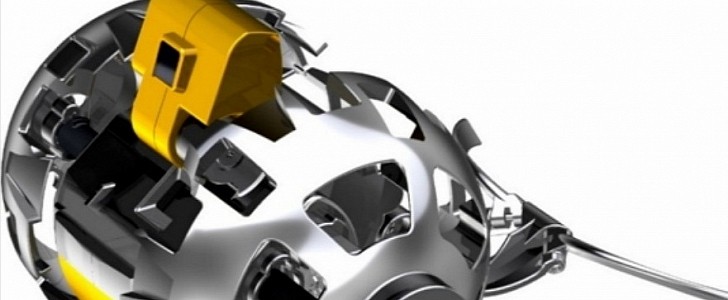Earth's only natural satellite and nearest celestial body seems to be in the spotlight these days, with agencies and companies rushing to get their technology on the lunar surface. Following Canada's announcement that it will enter the space exploration race with the goal of putting a rover on the Moon by 2026, Japan has also made plans to launch a small robot ball as early as next year.
The news comes right after General Motors and aerospace firm Lockheed Martin announced a partnership to create a lunar buggy for NASA's Moon exploration program. And, because the satellite's surface is coated with regolith — large rocks and dust — these future landing missions could be difficult and potentially dangerous.
With this new transformable lunar robot, the Japan Aerospace Exploration Agency (JAXA) hopes to acquire additional data on the lunar surface. The information obtained will contribute to the Lunar Cruiser's development, the agency's pressurized rover announced two years ago.
Set to launch in 2022, the robot will be transported by Japanese company ispace's lunar lander. Once on the Moon, it will take photos of the regolith and dust and send them to the mission control center via the lunar lander. The transformable have an 80 mm (3 inches) diameter (almost the size of a baseball) and will weigh around 250 g (about half a pound).
According to JAXA, the yet unnamed robot can turn from its ball shape into a running form after landing, contributing to a reduced volume during transportation. It's still a sphere, but judging from its design, it will use some sort of wheels to move around the rough terrain.
JAXA plans to land its Lunar Cruiser on the Moon by 2029, and the data collected by this small robot ball will help scientists better prepare for the future mission. Until then, we are waiting on GM and Lockheed Martin to roll out their buggy, which already has its lunar landing scheduled for 2024.
With this new transformable lunar robot, the Japan Aerospace Exploration Agency (JAXA) hopes to acquire additional data on the lunar surface. The information obtained will contribute to the Lunar Cruiser's development, the agency's pressurized rover announced two years ago.
Set to launch in 2022, the robot will be transported by Japanese company ispace's lunar lander. Once on the Moon, it will take photos of the regolith and dust and send them to the mission control center via the lunar lander. The transformable have an 80 mm (3 inches) diameter (almost the size of a baseball) and will weigh around 250 g (about half a pound).
According to JAXA, the yet unnamed robot can turn from its ball shape into a running form after landing, contributing to a reduced volume during transportation. It's still a sphere, but judging from its design, it will use some sort of wheels to move around the rough terrain.
JAXA plans to land its Lunar Cruiser on the Moon by 2029, and the data collected by this small robot ball will help scientists better prepare for the future mission. Until then, we are waiting on GM and Lockheed Martin to roll out their buggy, which already has its lunar landing scheduled for 2024.




